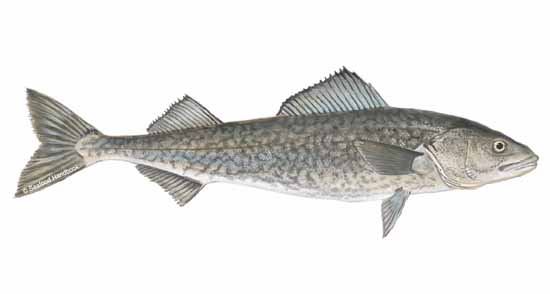
Alaska’s bountiful and rewarding waters provide our country-and a good part of the world, too-with seafood of unrivaled taste and nutritional quality. The sustainability of the Alaskan fisheries and the pristine condition of the waters off our northernmost state’s coast help assure that that will be the case indefinitely; and thankfully so, since our appetite for seafood is simply insatiable. Among the many great products coming out of the Alaskan seafood industry, one of the most delicious as well as one of the least marketed has to be sablefish, and in order to help prop up the reputation of this remarkable species, here are a few sablefish recipes to execute the next time you get your hands on some.
Sablefish is often marketed as black cod, even though it is not at all related to the codfish family. It can be found either fresh or frozen in most supermarkets throughout the nation, and most definitely at seafood markets. For the first of our sablefish recipes, get your hands on some 160z fillets; make sure they are fresh, that the flesh is a healthy pale white and has a sheen to it. Marinate the fillets in a mixture (prepare and mix before adding the fillets) of a half cup soy sauce, a few cloves of minced garlic, a chunk of grated ginger (make sure all that good ginger juice goes into the mix when grating, as it’s full of flavor), the juice of half a lemon, and a tablespoon or two of dry sherry. Let the fillets marinate for two hours, and then flip them and let them continue marinating another two hours. Finally, throw them on a hot grill (skin up) and flip after about 4 minutes, allowing more time on the skin side-basically until the skin is nice and crunchy, and the flesh flakes easily with a fork. Serve with a fresh salad and enjoy.
The second of our sablefish recipes is prepared in the oven. Start by placing a few 6-8oz sablefish fillets (this time without the skin), salt and peppered and sprinkled with a tiny bit of flour, in a sprayed-down baking dish a few inches deep. Separately, sauté a large pan of onions, chillie peppers, red bell peppers, and garlic. After a few minutes, add plenty cherry tomatoes, cut in half, as well as parsley, basil, oregano, and thyme (at your discretion, and don’t be shy) as well as a ¼ cup of sugar and the juice of a whole lime. Pour this pan preparation over the fillets in the baking dish, and send it all, without a lid, to an oven at 450 degrees for about 15 minutes. Test with a fork to see the flesh flakes easily, and remove, and serve alongside or on top of Spanish rice. Just another of the many delicious sablefish recipes possible to make!
Shopping for fish can be difficult these days, especially for consumers who are trying to do right by the environment while still bringing home something delicious and affordable. Thankfully, many different fish populations are on their way to recovery, with particular areas of the oceans not even experiencing problems.
One of the best bets for a delicious and nutritious meal is Alaska snow crab. The icy waters off the coast of Alaska are a host to a thriving population of snow crab, many of whom migrate from deeper waters to shallower waters and benefit greatly from the fresh and unspoiled conditions in their feeding grounds. Better yet, the meticulously managed fisheries for Alaska snow crab means that this delicious and veritable protein source is in no way in danger of being over fished currently, making dinner a delicious and guilt-free affair.
Preparing snow crab is a relatively straightforward process, and those health-conscious chefs can rest assured that snow crab tastes equally delicious boiled or steamed. Simple to prepare, it’s easy to class up any dinner occasion with minimal effort. Whether you’re a beginner chef or seasoned professional, you can surely handle Alaska snow crab. Here are two recipe suggestions to get you started.
